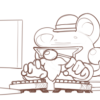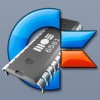Why are keyboards getting smaller?
I’m not a true mechanical keyboard enthusiast. I mean I like a good keyboard for typing code, so I rolled with model-Ms in the 80s and 90s, then some expensive Cherry keyboard I only recently retired because it was utterly spent (and it was PS/2), and now I happily use a Wooting Two HE.
I’m so glad the mechanical gaming keyboard scene has developed so much: it means there’s a plethora of really excellent keyboards for the rest of us who don’t play games.
But something utterly baffles me: why are high-quality keyboards getting smaller?
There’s a lot more keyboards without the numpad and the block of middle keys - whatever they’re called - or with the middle keys reduced or squashed up awkwardly on the side, than full-size plain old 102- or 104-key layout keyboards. What’s wrong with the numpad? Isn’t more keys generally better?
Back in the days, I bought the original Happy Hacking keyboard because it kind of made sense to maneuver around in our server room with a small keyboard that took up less space. Typing on it drove me up the wall but it was convenient to carry. And I guess it was also good option for going to LAN parties with a smaller backpack. But other than that, for a keyboard that never leaves your desk, I don’t get it.
Are there other advantages to smaller keyboards? Genuine question! I’m not dumping on smaller keyboards: to each his own and if you’re happy with yours, more power to you. I’d just like to know why you prefer smaller.








Add comment